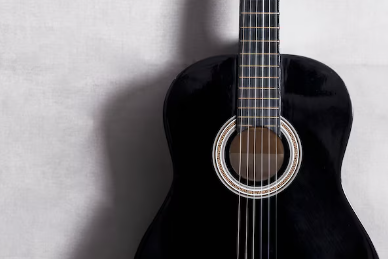9 Easy Practice Tips for Smooth Chord Transitions

Learning smooth chord transitions is a key skill for beginner guitarists, and it makes a world of difference in your playing. If you’ve found yourself stumbling through chord changes or feeling frustrated with clunky transitions, don’t worry – you’re not alone! With consistent practice and a few effective techniques, you’ll find that chord changes become smoother and more natural over time. Here’s a guide to help you build that skill, with exercises and tips to improve your transitions and achieve a cleaner, more polished sound.
Why Smooth Chord Transitions Matter
Smooth chord transitions are essential for creating a pleasing flow in your music. When you play a song, especially at faster tempos, you need to move between chords quickly and precisely. Sloppy transitions can disrupt the rhythm and take away from the overall sound. Mastering chord changes will not only improve the quality of your playing but also build your confidence to tackle more complex songs down the line.
1. Familiarize Yourself with the Chords First
Before focusing on smooth chord transitions, make sure you know each chord well. Take time to memorize finger placements, and ensure you’re comfortable playing each chord individually. Practice each one slowly, paying attention to finger placement and hand position. A strong foundation with individual chords will make the transitions between them much easier.
2. The “Slow Motion” Technique
One effective technique for improving smooth chord transitions is to practice them in “slow motion.” Start by playing two chords slowly, exaggerating each finger movement:
- Choose two simple chords, like G and C, and set a very slow tempo (use a metronome if you have one).
- Begin by moving your fingers one by one from the G chord to the C chord, thinking about each finger’s path.
- Continue practicing this slow-motion switch until it feels natural, then gradually increase the speed.
This approach helps build muscle memory and ensures you’re placing each finger correctly before moving to the next chord.
3. “Anchor Fingers” for Efficient Transitions
Anchor fingers are fingers that can stay in place when you move from one chord to another. For example, when transitioning from G to D, you can keep your ring finger in place on the third fret of the B string. Here’s how to use anchor fingers effectively:
- Identify any fingers that can stay in place or move minimally between chords.
- Focus on keeping those anchor fingers steady while adjusting the other fingers to form the new chord.
- Practice with chord pairs that share anchor fingers, like G and D, or A and D, to reinforce this technique.
Using anchor fingers will save you time and reduce unnecessary movement, resulting in smoother transitions.
4. Focus on Strumming Patterns Separately
Sometimes, choppy transitions are caused by trying to manage both chord changes and strumming patterns simultaneously. Break down your practice by working on the strumming pattern separately for a smooth chord transition. Practice the strum until it feels comfortable, then incorporate the chord changes. Here’s a simple exercise to try:
- Pick a four-beat strumming pattern and practice it without changing chords.
- Once you’re comfortable, introduce a chord change on the first beat of the measure.
- Slowly work up to more frequent changes until you can maintain both the strum and the transitions.
5. Metronome Practice: Building Speed Gradually
Using a metronome is invaluable for developing timing and consistency in smooth chord transitions. Start slow and gradually increase the tempo:
- Set a comfortable tempo on your metronome (60-70 BPM is a good starting point).
- Choose two chords and switch between them every four beats, following the metronome’s clicks.
- As you feel more confident, increase the tempo by 5-10 BPM and repeat the exercise.
Practicing with a metronome will help you develop rhythm and maintain control over your transitions, even as you increase the speed.
6. The “One-Minute Changes” Exercise
The “One-Minute Changes” exercise is a simple but powerful drill that can improve your speed and accuracy in smooth chord transitions. Here’s how to do it:
- Set a timer for one minute.
- Choose two chords to practice (e.g., G and C).
- Play the first chord, then switch to the second, aiming for as many smooth transitions as possible within one minute.
- Track your progress and try to increase the number of transitions over time.
This quick exercise helps build muscle memory and trains your fingers to switch quickly between chords.
7. Minimizing Finger Movement
Sometimes the key to smooth chord transitions is as simple as minimizing unnecessary movement. Take a moment to assess whether you’re lifting your fingers too high off the strings. Try to keep your fingers close to the fretboard, moving them just enough to reach the next chord:
- Practice making smaller, efficient movements by focusing on keeping your fingers as close to the strings as possible.
- Notice where you tend to “over-move” and see if you can reduce that range.
- As you practice, focus on controlling finger movement without sacrificing clarity.
8. Visualizing the Chord Shapes
Visualization can also be a helpful tool for smooth chord transitions. Before you switch chords, take a moment to imagine the shape and placement of the next chord. Picture each finger’s position, and visualize the transition from your current chord to the next one. This mental rehearsal helps train your brain and fingers to anticipate each chord, making the transition smoother when you actually play it.
9. Record and Evaluate Your Progress
Recording yourself while you practice is a great way to identify areas that need improvement. Listen carefully to each transition, paying attention to any hesitations, buzzing, or muting. Use this feedback to adjust your practice, focusing on any problem areas. Over time, you’ll be able to play with cleaner transitions and more confidence.
Final Thoughts: Practice Makes Perfect
Mastering chord transitions takes time, patience, and regular practice. Don’t be discouraged if it feels challenging at first – smooth transitions come with consistent effort and focus. Remember to practice slowly, use techniques like anchor fingers, and break down each aspect of the transition until it feels natural. Before you know it, you’ll be transitioning between chords effortlessly, bringing a new level of smoothness and polish to your playing.
Keep practicing, and strumming!
Interested in taking your guitar skills to the next level? Click the below and book a free lesson with us! We’re committed to helping you express yourself freely on the guitar without endless scales and theory. Happy playing!
Author: Daniel Powers Jr, the founder of Real Brave™, serves as the chief inspiration to thousands of students in the Real Brave music instruction program. He’s also the visionary behind PracticePad™, an online platform for live one-on-one online music lessons, lesson tracking, and scheduling. Beyond his entrepreneurial pursuits, Daniel leads a non-profit organization that provides formerly homeless children with access to music education, making a profound impact on their lives. His unwavering dedication to music, innovation, and education continues to inspire individuals to reach their fullest potential while creating positive change in communities. Follow Real Brave on all the socials:
youtube.com/@realbraveinc
twitter.com/realbraveinc
https://www.tiktok.com/@realbraveinc
instagram.com/realbraveaudio
facebook.com/realbraveinc






